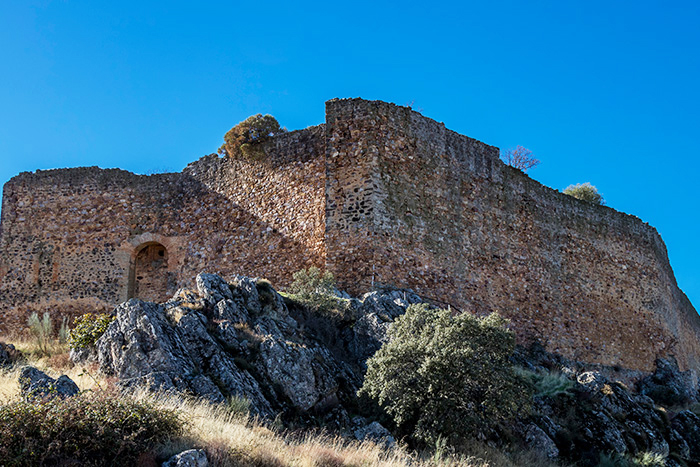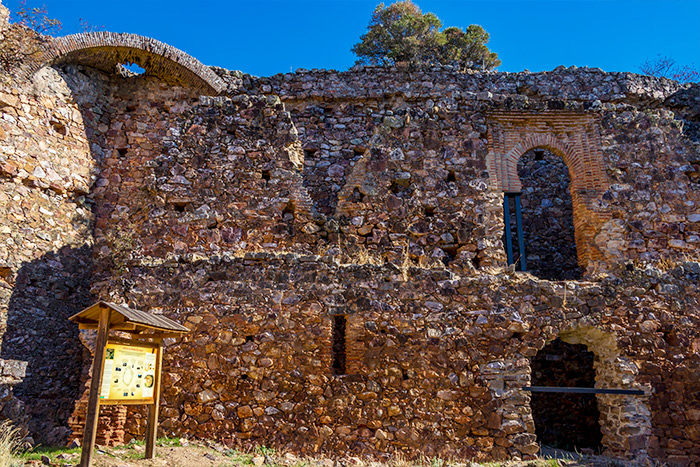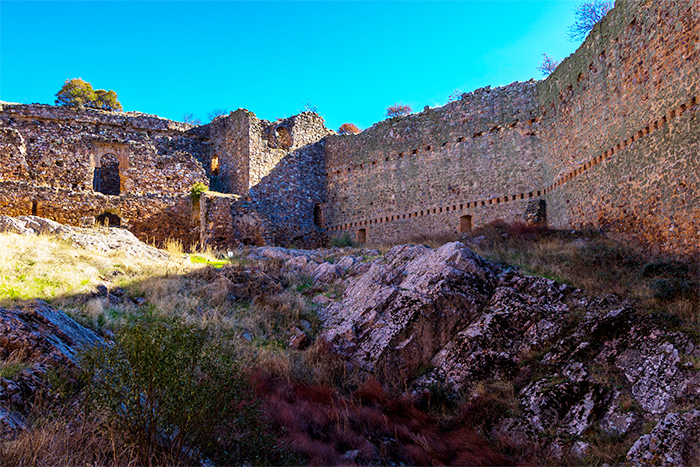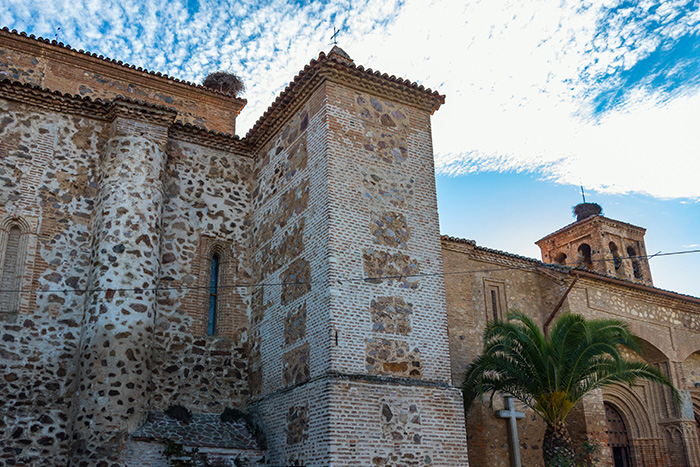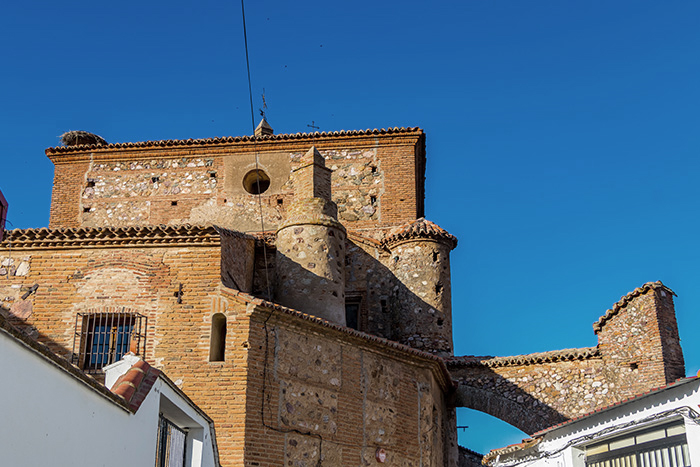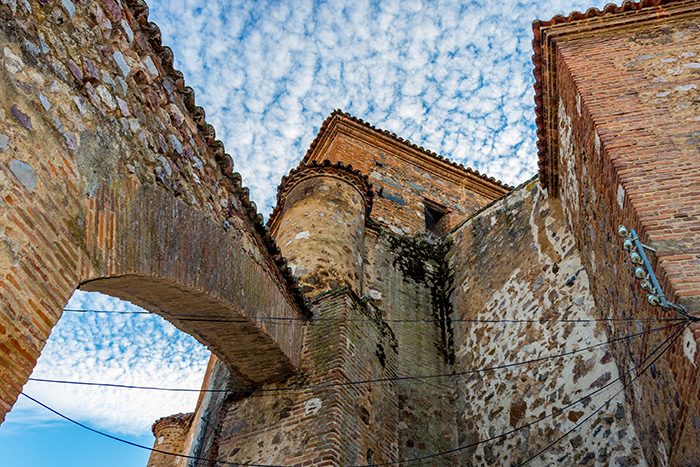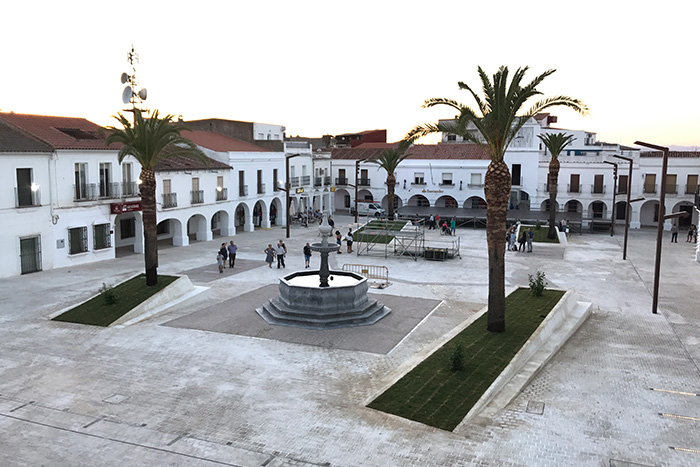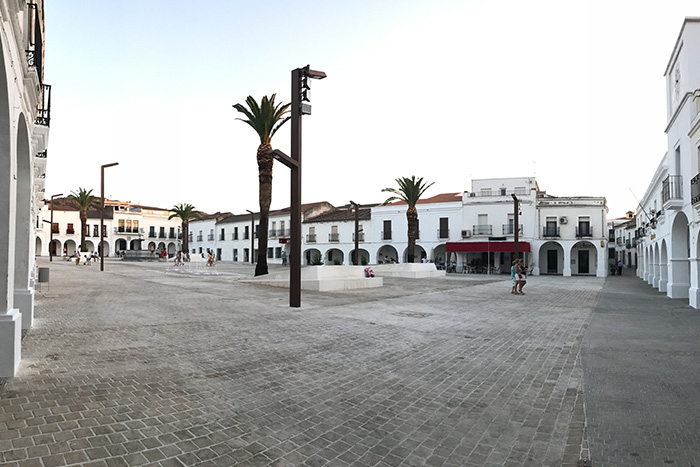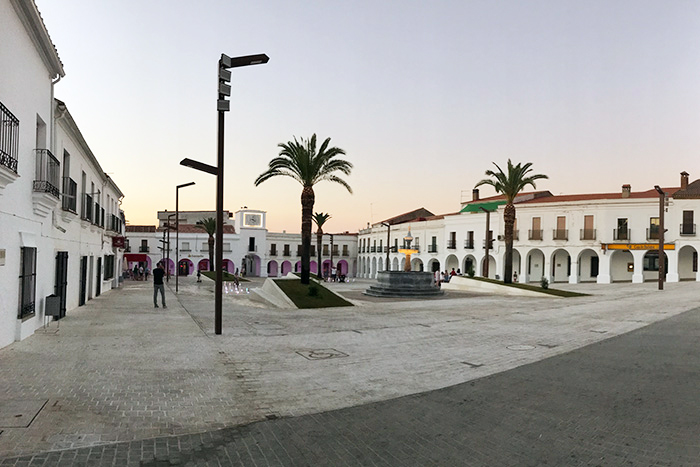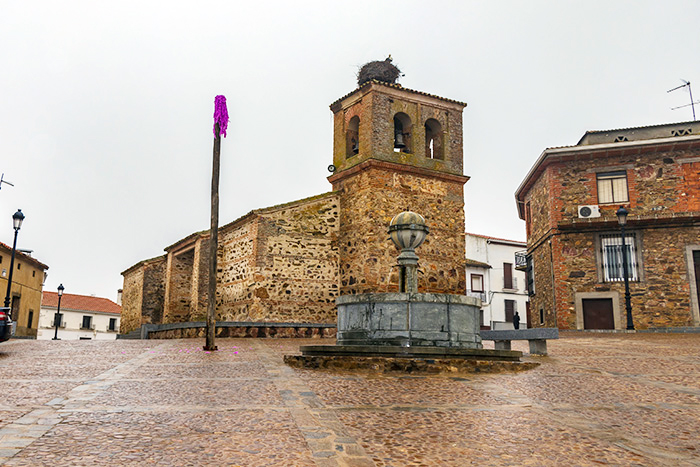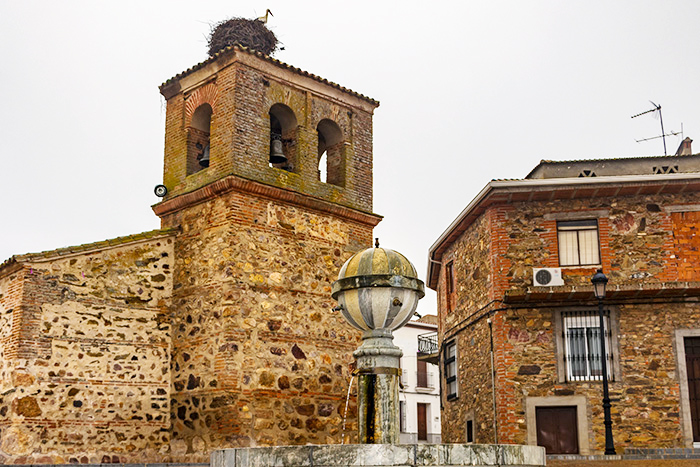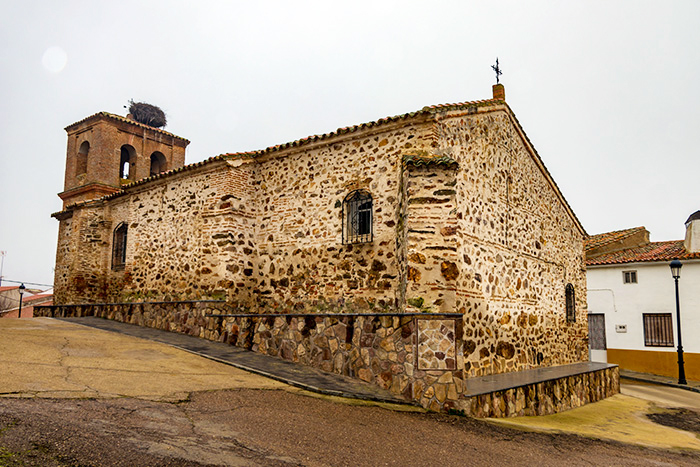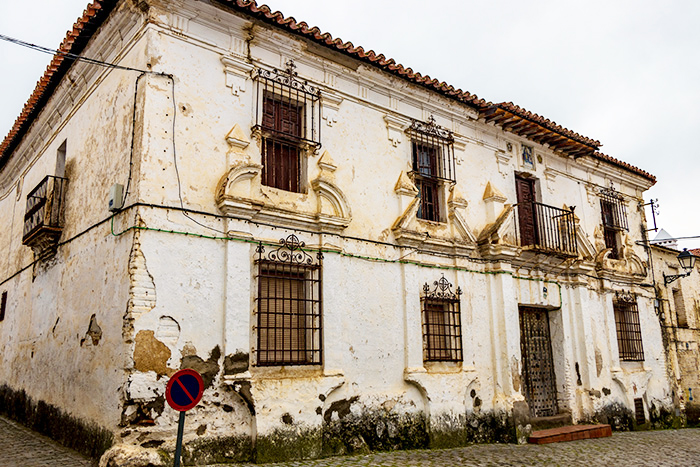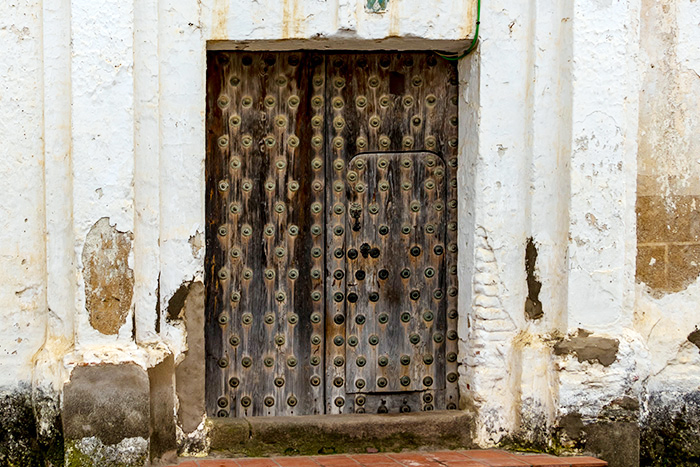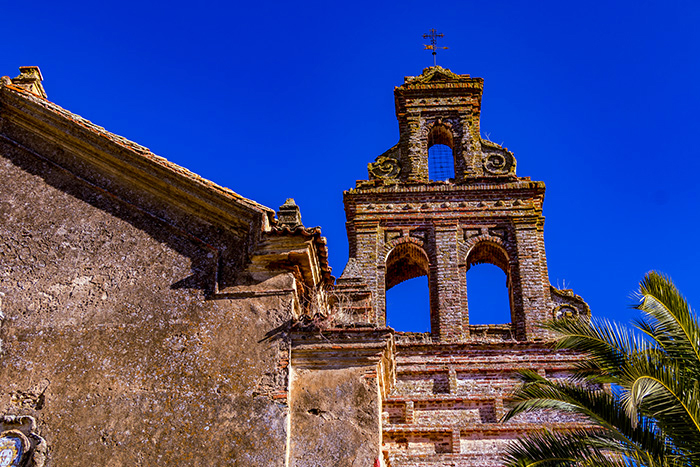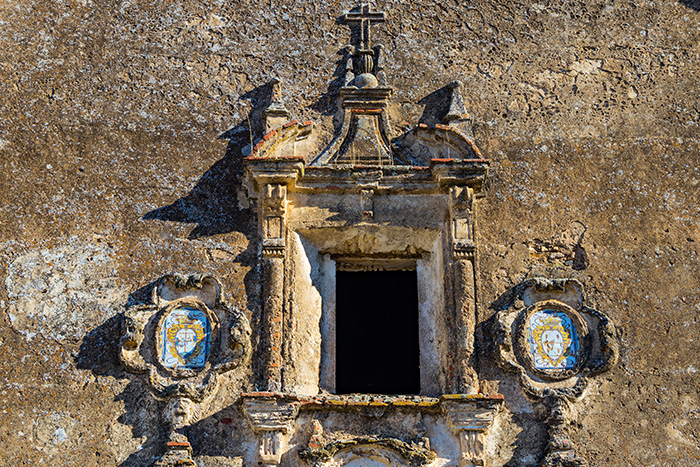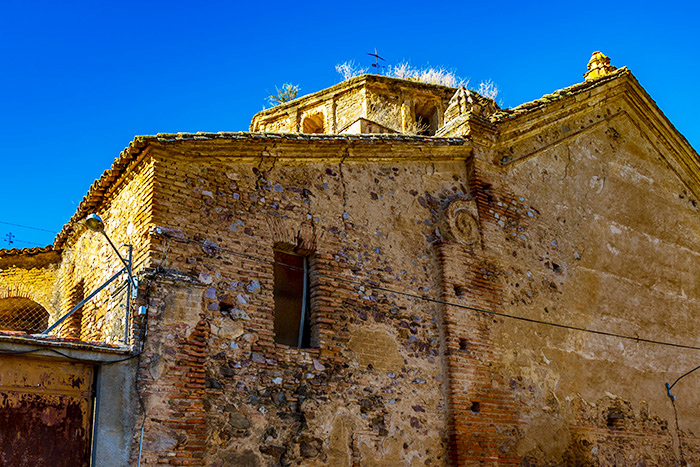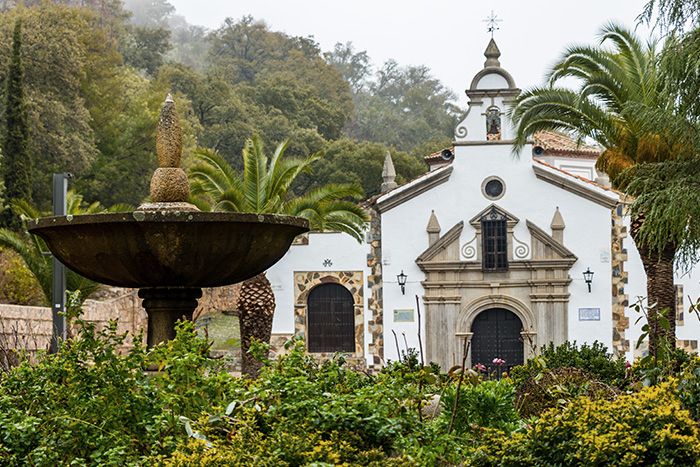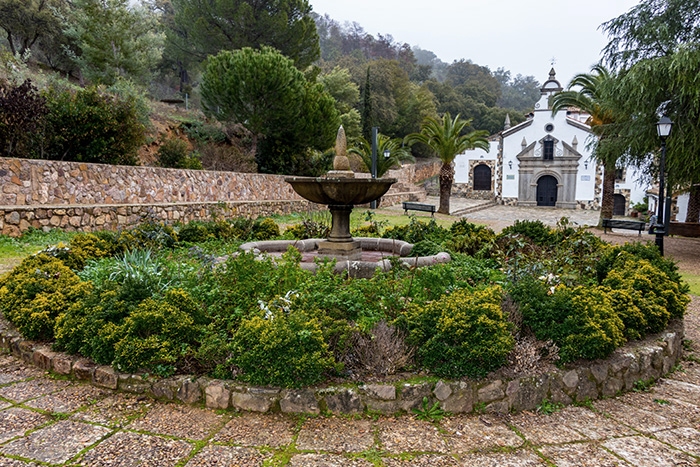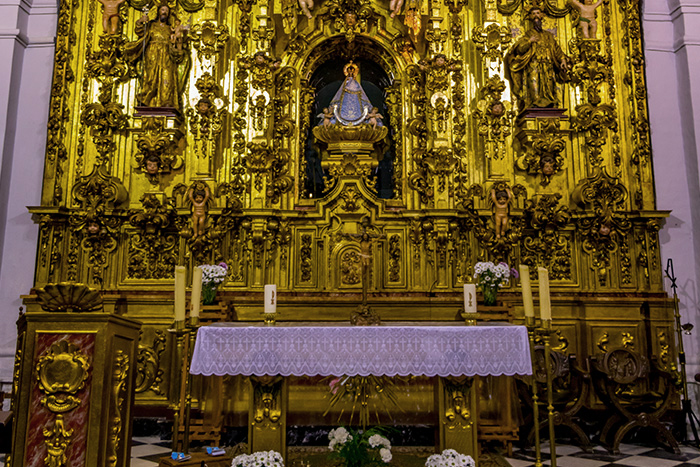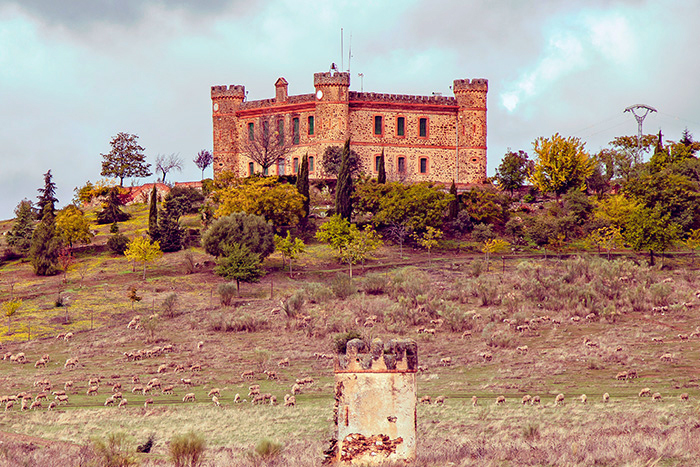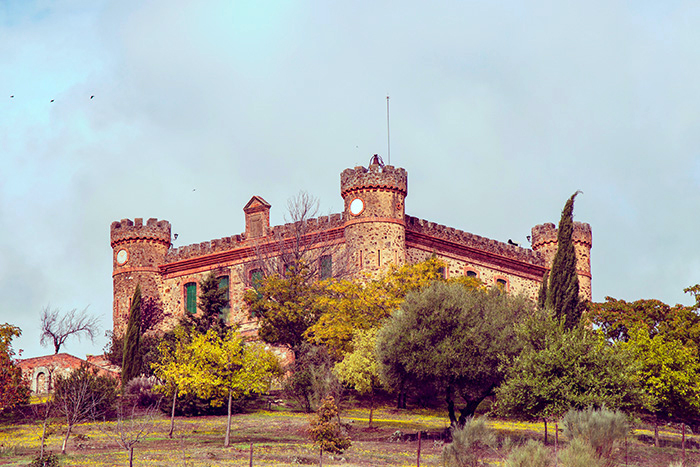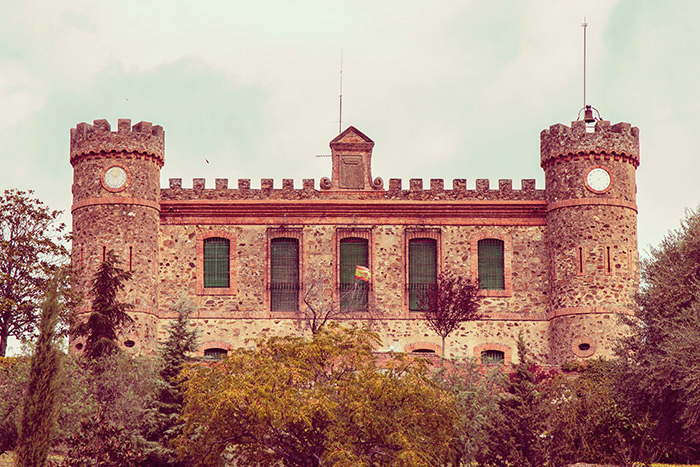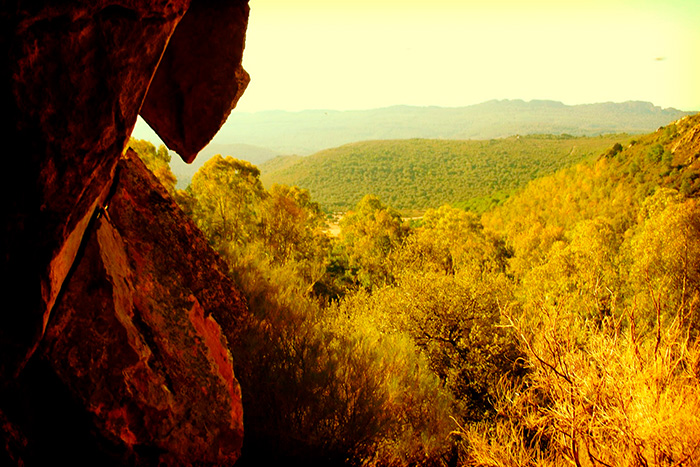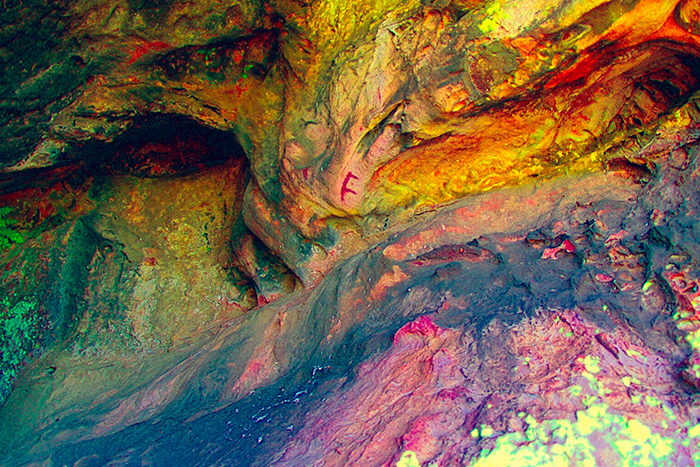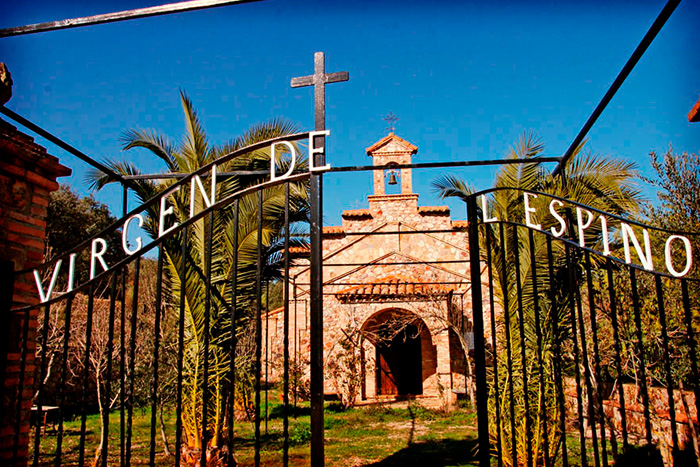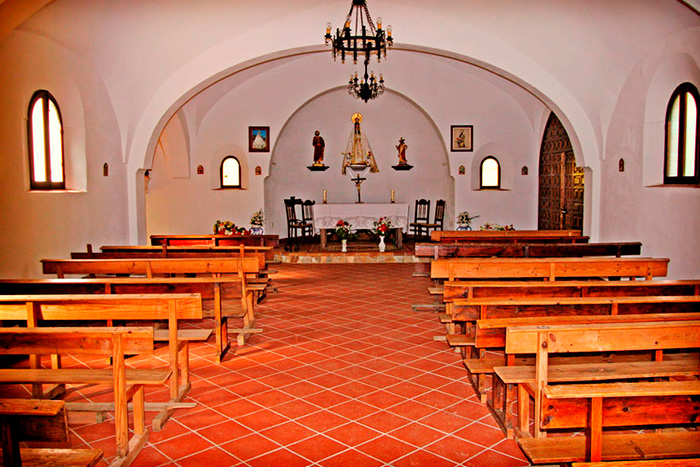No products in the cart.
Castle
A must-see for tourists, researchers, and wanderers. Its walls are still standing and inside there are plenty of archeological remains.
Within the thick walls, the visitor will find the remains of a second enclosure with gothic elements; a prison stronghold, a large vaulted square cistern and an archway that allows one to cross the parapet and access an lookout tower.
The walls have few openings, the main one being a stone and brick Moorish arch that provides the only entrance to the site. The ruins inside attest to the existence of additional arches in the original Southern and Eastern façades.
Church of St. John the Baptist
Devoted to St. John the Baptist, it features three vaulted naves. The earliest historic records can be traced back to 1483.
The exterior is built with mortar, while the interior of the church is built in a Renaissance style. Amongst the artistic highlights, visitors will find polychrome sculptures by Gregorio Prado and several Mannerist paintings from Juan Correa de Vivar. The altarpiece was created between 1546 and 1550.
The sanctuary currently in use, a work by Mariano Molagón, is another highlight. It was a gift from the christians in the town and was installed on the 8th of June, day of the Lord, of 1944.
Plaza de España
Brimming with history, this square is an iconic site within the town, with its beautiful and spacious design. Almost arcaded in its full perimeter, around the mid-20th century the square suffered, and that verb can be taken literally, several transformations that diminished its original charm and appearance.
Almost in the middle of the square, a stone fountain was erected in 1787. Built in black jasper with an octagonal shape, it features three steps where women collected water to take home until a few years ago.
Saint Anthony the Abbot church
The old church of Peloche is one of the most distinctive of its kind. Small and sturdy, its shape and construction echo ancient times.
It features a central nave with an altarpiece that was installed a decade ago. On the right-hand side, visitors find a sculpture of Saint Anthony the Abbot, while on the left they can observe one of the Virgin May. At the center, there is a figure of Christ on the Cross.
Other statues of interest are those of the Immaculate Virgin, Saint Andrew and Saint Blas. The latter is kept in the vestry awaiting restoration.
Manor Houses
These homes belonging to the rural aristocracy attest to the noble past of the town.
One of the most interesting ones, attributed to the Medieval Encomienda of Alcántara, is located on San Juan street.
In the interior there are mosaics with several motifs and inscriptions, as well as the remains of the old stables. It belonged to the first lord of Belalcázar, Hinojosa, Puebla, and Herrera, the only grand master of the said order in the region. Its construction can be traced back to the first half of the 17th century.
Convent
The Franciscan convent of Purísima Concepción was founded in 1517 by the friar Alonso de Sotomayor, count of Belalcázar, in the shrine of Nuestra Señora de la Merced and was relocated to its current location in 1603, where its Renaissance style can still be appreciated.
The interior of the church with its Latin cross floor plan follows the classic design, with a nave with a transept, a four-window dome, and Barroque altarpieces (Mélida, 1924). The cloister, the slender brick steeple, the superior and lower infirmaries, and the orchard round off the construction.
Consolación Shrine
Located 5 km to the west of the village, among the beautiful landscape of the Consolación valleys, in the municipal district of Puebla de Alcocer, it is surrounded by pine trees, olive trees, eucalyptus and centenarian cork trees.
With a Neoclassical style, it features a single 170 square meter nave.
It was first built in the 15th century but rebuilt later on. The dome is decorated with paintings depicting the crowning of the Virgin Mary. Meanwhile, the Barroque altarpiece shows certain Renaissance influences.
The lady shrine, placed behind the shrine’s altar, was built in 1637 and features mosaic flooring. At the entrance, in a wooden frame, a piece of parchment from the 7th of September 1980 certifies the Crowning of the Virgin.
Cíjara Palace
This palace-fortress was built by count Villapadierna close to the remains of the colony and the Golosilla, on a promontory by the river Guadiana. The building has been dated around 1873, when the count acquired Cíjara. Two other palaces, one in Zamora and the other one in Andalusia, follow the same design: a solid rectangle with tall round towers at its corners.
Earlier on, there was probably a wall surrounding the enclosure. There are two other small towers that used to close up the large enclosure.
Panda Paintings
Behind Peloche there are several prehistoric paintings from the Bronze Age. The discovery of these artistic manifestations in the Peloche mountain ranges is indicative of how long human have inhabited the area.
They portray hunting and shepherding scenes, with animals and idols. They can be found in the Golondrinos Mountains, among greenery and wildlife.
Virgen del Espino Shrine
This modern construction has some attractions of its own. Bishop Rafael Palmero Ramos opened it officially on the 1st of November 1992. The Virgin’s name comes from the beautiful area with a spring called “Espino” (hawthorn) near to where the shrine is located. The statue is a copy of the Virgin of Aldeanueva of Barbarroya in the province of Toledo.



